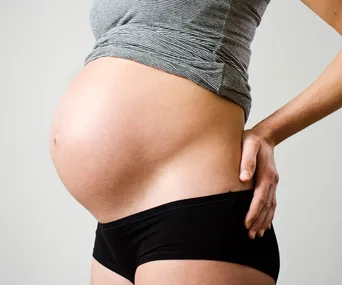There would be few women in the world who would feel ready to be pregnant with triplets. When they are told the news and immediately think to themselves, “Ok, I’ve got this.” For the majority, the news would come as a huge surprise and you would feel a mix of emotions including, amazement, joy, shock, fear, disbelief and how… as in, OMG! How did this happen?
According to the Australian Bureau of Statistics, 309,142 births occured in 2017. Of these, there were just under 60 sets of triplets born.
Three or more babies are known as Higher Order Multiples (HOMs) and can be:
Monozygotic – they are formed after one fertilised egg has split into three identical embryos; or
Dizygotic – they are formed from separate eggs, that is with a set of identical (2) and a fraternal (1) triplet.
Polyzygotic – there is a set of identical (or monozygotic) twins conceived and another egg is released which is then fertilised by another sperm.
READ NEXT: Celebrities you didn’t know were twins!

The chance of having identical triplets is 1 in 62,500 pregnancies. Or thereabouts. (Image: Getty Images.)
What are the odds of conceiving triplets?
The most likely way to conceive with triplets is to have fertility assistance and/or take medication which increases ovulation. There does not seem to be any scientific evidence to support the theory that having identical multiples is influenced by heredity. It seems that the splitting of a fertilised egg happens at random.
But hyper ovulation (where the ovaries release more than one egg each month) is certainly influenced by genetics, so women who come from families where non-identical multiples are common do have more chances of having their own multiple births.
Statistics vary but some research suggests conceiving triplets naturally occurs 1 in every 9000 births. Via fertility assistance, the likelihood increases to around 1 in every 40.
Triplet mum and Australian Multiple Birth Association (AMBA) Communications Director Ali Mountifield says the best statistics seem to correlate with the data we’re seeing in Australia is from Mothers of Supertwins (MOST) in the US. Their data shows that the chance of having identical triplets is 1 in 62,500 pregnancies.
AMBA provides the following Australian figures for context:
Australian Bureau of Statistics data shows that of the 305,079 births in 2012, 4,480 of these – 1.5 percent – were sets of multiples, ie when one pregnancy results in two or more babies.
59 of the 4,480 multiple births – 1.3 percent – were sets of Higher Order Multiples (HOMs), ie when the pregnancy results in three or more babies.
According to information supplied to AMBA by 34 families of HOMs born in 2012, at least 34 of the 59 were sets of triplets (no quadruplets or more were reported).
Five of these sets – 14.7 percent – were identical triplets.
Four sets – 80.0 percent – were conceived ‘naturally’, ie without assisted reproductive technology.
Continues after video.
Multiple pregnancies are considered high-risk pregnancies. Carrying triplets is a lot of work for your body, hello back aches, pelvic pain, increased swelling and more. There is also an increased chance of pregnancy complications, such as high blood pressure (preeclampsia) and diabetes. The bubs are also at higher risk of being smaller than expected and premature and may need to go to neonatal intensive care for a period after birth.
Being pregnant with triplets or more does require more care from your medical team – and yourself – but most families with multiple pregnancies will tell you it’s an amazing experience.
For support and resources, contact the Australian Multiple Birth Association (AMBA).


